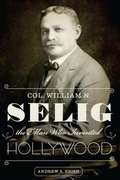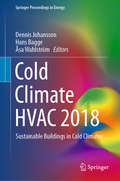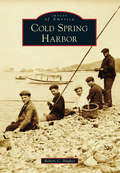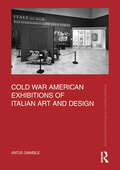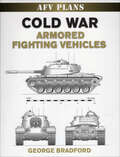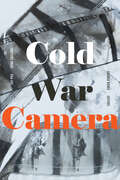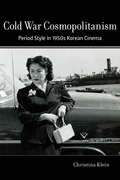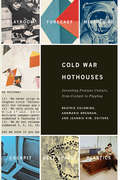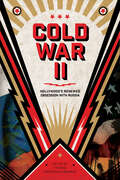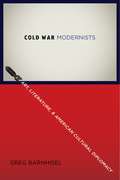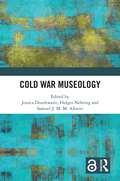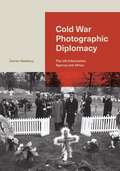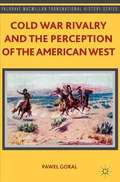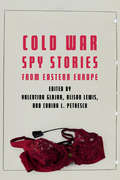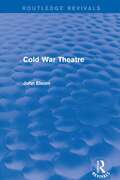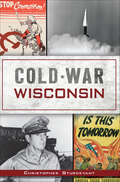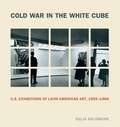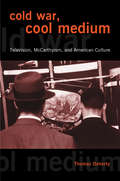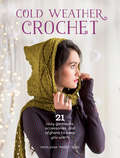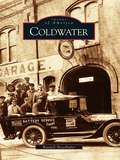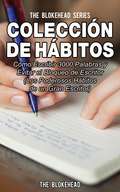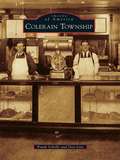- Table View
- List View
Col. William N. Selig: The Man Who Invented Hollywood
by Andrew A. ErishAll histories of Hollywood are wrong. Why? Two words: Colonel Selig. This early pioneer laid the foundation for the movie industry that we know today. Active from 1896 to 1938, William N. Selig was responsible for an amazing series of firsts, including the first two-reel narrative film and the first two-hour narrative feature made in America; the first American movie serial with cliffhanger endings; the first westerns filmed in the West with real cowboys and Indians; the creation of the jungle-adventure genre; the first horror film in America; the first successful American newsreel (made in partnership with William Randolph Hearst); and the first permanent film studio in Los Angeles. Selig was also among the first to cultivate extensive international exhibition of American films, which created a worldwide audience and contributed to American domination of the medium. In this book, Andrew Erish delves into the virtually untouched Selig archive at the Academy of Motion Picture Arts and Sciences Library to tell the fascinating story of this unjustly forgotten film pioneer. He traces Selig's career from his early work as a traveling magician in the Midwest, to his founding of the first movie studio in Los Angeles in 1909, to his landmark series of innovations that still influence the film industry. As Erish recounts the many accomplishments of the man who first recognized that Southern California is the perfect place for moviemaking, he convincingly demonstrates that while others have been credited with inventing Hollywood, Colonel Selig is actually the one who most deserves that honor.
Cold Climate HVAC 2018: Sustainable Buildings in Cold Climates (Springer Proceedings in Energy)
by Dennis Johansson Hans Bagge Åsa WahlströmThis volume presents the proceedings of the 9th Cold Climate HVAC conference, which was held in Kiruna, Sweden in 2018. The conference highlighted key technologies and processes that allow scientists, designers, engineers, manufacturers and other decision makers in cold climate regions to achieve good indoor environmental quality (IEQ) with a minimum use of energy and other resources. The conference addressed various technical, economic and social aspects of buildings and HVAC systems in new and renovated buildings. This proceedings volume gathers peer-reviewed papers by a diverse and international range of authors and showcases perspectives and practices in cold climate building design from around the globe. The following major aspects, which include both fundamental and theoretical research as well as applications and case studies, are covered: (1) Energy and power efficiency and low-energy buildings; (2) Renovating buildings; (3) Efficient HVAC components; (4) Heat pumps and geothermal systems; (5) Municipal and city energy systems; (6) Construction management; (7) Buildings in operation; (8) Building simulation; (9) Reference data; (10) Transdisciplinary connections and social aspects; (11) Indoor environments and health; (12) Moisture safety and water damage; (13) Codes, regulations, standards and policies; and (14) Other aspects of buildings in cold climates.
Cold Spring Harbor
by Robert C. HughesA bustling industrial community in the 19th century, Cold Spring Harbor was once described as "a sweet bay of beauty." The area briefly served as a whaling port and was a center for shipbuilding, milling, and farming. Located just 35 miles from midtown Manhattan, Cold Spring Harbor was a fashionable summer resort for New York City residents who came to the area during the Gilded Age to enjoy the cool breezes off the shores of the harbor. Today, Cold Spring Harbor is a residential community with excellent schools, active organizations, museums, and the world-renowned Cold Spring Harbor Laboratories. Cold Spring Harbor traces the development of the area from its days as a bustling whaling port to a 20th-century suburbanized community.
Cold War American Exhibitions of Italian Art and Design (Routledge Research in Art Museums and Exhibitions)
by Antje GambleEnriching the existing scholarship on this important exhibition, Italy at Work: Her Renaissance in Design Today (1950–53), this book shows the dynamic role art, specifically sculpture, played in constructing both Italian and American culture after World War II (WWII). Moving beyond previous studies, this book looks to the archival sources and beyond the history of design for a greater understanding of the stakes of the show. First, the book considers art’s role in this exhibition’s import—prominent mid-century sculptors like Giacomo Manzù, Fausto Melotti, and Lucio Fontana were included. Second, it foregrounds the particular role sculpture was able to play in transcending the boundaries of fine art and craft to showcase innovative formalist aesthetics of modernism without falling in the critiques of modernism playing out on the international stage in terms of state funding for art. Third, the book engages with the larger socio-political use of art as a cultural soft power both within the American and Italian contexts. Fourth, it highlights the important role race and culture of Italians and Italian-Americans played in the installation and success of this exhibition. Lastly, therefore, this study connects an investigation of modernist sculpture, modern design, post-war exhibitions, sociology, and transatlantic politics and economics to highlight the important role sculpture played in post-war Italian and American cultural production. The book will be of interest to scholars working in art history, design history, museum studies, Italian studies, and American studies.
Cold War American Exhibitions of Italian Art and Design (Routledge Research in Art Museums and Exhibitions)
by Antje GambleEnriching the existing scholarship on this important exhibition, Italy at Work: Her Renaissance in Design Today (1950–53), this book shows the dynamic role art, specifically sculpture, played in constructing both Italian and American culture after World War II (WWII).Moving beyond previous studies, this book looks to the archival sources and beyond the history of design for a greater understanding of the stakes of the show. First, the book considers art’s role in this exhibition’s import—prominent mid-century sculptors like Giacomo Manzù, Fausto Melotti, and Lucio Fontana were included. Second, it foregrounds the particular role sculpture was able to play in transcending the boundaries of fine art and craft to showcase innovative formalist aesthetics of modernism without falling in the critiques of modernism playing out on the international stage in terms of state funding for art. Third, the book engages with the larger socio-political use of art as a cultural soft power both within the American and Italian contexts. Fourth, it highlights the important role race and culture of Italians and Italian-Americans played in the installation and success of this exhibition. Lastly, therefore, this study connects an investigation of modernist sculpture, modern design, post-war exhibitions, sociology, and transatlantic politics and economics to highlight the important role sculpture played in post-war Italian and American cultural production.The book will be of interest to scholars working in art history, design history, museum studies, Italian studies, and American studies.
Cold War Armored Fighting Vehicles (AFV Plans)
by George BradfordFor modelers and military enthusiasts, a collection of scale drawings of post-WWII 20th century military vehicles. This volume of scale drawings of military vehicles covers the Cold War, from the end of World War II through 1990. Included here are the armored fighting vehicles that fought in Korea and Vietnam, in the Arab-Israeli wars, and in other conflicts around the globe, as well as those that never saw combat. Vehicles include: · Centurion main battle tank (Britain) · Leopard 2 main battle tank (Germany) · Magach 6 tank (Israel) · T-55 main battle tank (Soviet Union) · M47 Patton medium tank (United States) · And dozens more . . .
Cold War Camera
by Thy Phu, Andrea Noble and Erina DuganneCold War Camera explores the visual mediation of the Cold War and illuminates photography’s role in shaping the ways it was prosecuted and experienced. The contributors show how the camera stretched the parameters of the Cold War beyond dominant East-West and US-USSR binaries and highlight the significance of photography from across the global South. Among other topics, the contributors examine the production and circulation of the iconic figure of the “revolutionary Vietnamese woman” in the 1960s and 1970s; photographs connected with the coming of independence and decolonization in West Africa; family photograph archives in China and travel snapshots by Soviet citizens; photographs of apartheid in South Africa; and the circulation of photographs of Inuit Canadians who were relocated to the extreme Arctic in the 1950s. Highlighting the camera’s capacity to envision possible decolonialized futures, establish visual affinities and solidarities, and advance calls for justice to redress violent proxy conflicts, this volume demonstrates that photography was not only crucial to conducting the Cold War, it is central to understanding it.Contributors. Ariella Azoulay, Jennifer Bajorek, Erina Duganne, Evyn Lê Espiritu Gandhi, Eric Gottesman, Tong Lam, Karintha Lowe, Ángeles Donoso Macaya, Darren Newbury, Andrea Noble, Sarah Parsons, Gil Pasternak, Thy Phu, Oksana Sarkisova, Olga Shevchenko, Laura Wexler, Guigui Yao, Donya Ziaee, Marta Ziętkiewicz
Cold War Cosmopolitanism: Period Style in 1950s Korean Cinema
by Christina KleinSouth Korea in the 1950s was home to a burgeoning film culture, one of the many "Golden Age cinemas" that flourished in Asia during the postwar years. Cold War Cosmopolitanism offers a transnational cultural history of South Korean film style in this period, focusing on the works of Han Hyung-mo, director of the era’s most glamorous and popular women’s pictures, including the blockbuster Madame Freedom (1956). Christina Klein provides a unique approach to the study of film style, illuminating how Han’s films took shape within a "free world" network of aesthetic and material ties created by the legacies of Japanese colonialism, the construction of US military bases, the waging of the cultural Cold War by the CIA, the forging of regional political alliances, and the import of popular cultures from around the world. Klein combines nuanced readings of Han’s sophisticated style with careful attention to key issues of modernity—such as feminism, cosmopolitanism, and consumerism—in the first monograph devoted to this major Korean director. A free open access ebook is available upon publication. Learn more at www.luminosoa.org.
Cold War Hothouses: Inventing Postwar Culture, from Cockpit to Playboy
by Beatriz Colomina Annemarie Brennan Jeannie KimThe technological innovation and unprecedented physical growth of the cold war era permeated American life in every aspect and at every scale. From the creation of the military-industrial complex and the beginnings of suburban sprawl to the production of the ballpoint pen and the TV dinner, the artifacts of the period are a numerous and diverse as they are familiar. Over the past half-century, our awe at the advances of postwar society has softened to nostalgia, and our affection for its material culture has clouded our memories of the enormous spatial reorganizations and infrastructural transformations that changed American life forever.
Cold War II: Hollywood's Renewed Obsession with Russia
by Tatiana Prorokova-KonradContributions by Thomas J. Cobb, Donna A. Gessell, Helena Goscilo, Cyndy Hendershot, Christian Jimenez, David LaRocca, Lori Maguire, Tatiana Prorokova-Konrad, Ian Scott, Vesta Silva, Lucian Tion, Dan Ward, and Jon Wiebel In recent years, Hollywood cinema has forwarded a growing number of images of the Cold War and entertained a return to memories of conflicts between the USSR and the US, Russians and Americans, and communism and capitalism. Cold War II: Hollywood’s Renewed Obsession with Russia explores the reasons for this sudden reestablished interest in the Cold War. Essayists examine such films as Guy Ritchie’s The Man from U.N.C.L.E., Steven Spielberg’s Bridge of Spies, Ethan Coen and Joel Coen’s Hail, Caesar!, David Leitch’s Atomic Blonde, Guillermo del Toro’s The Shape of Water, Ryan Coogler’s Black Panther, and Francis Lawrence’s Red Sparrow, among others, as well as such television shows as Comrade Detective and The Americans. Contributors to this collection interrogate the revival of the Cold War movie genre from multiple angles and examine the issues of patriotism, national identity, otherness, gender, and corruption. They consider cinematic aesthetics and the ethics of these representations. They reveal how Cold War imagery shapes audiences’ understanding of the period in general and of the relationship between the US and Russia in particular. The authors complicate traditional definitions of the Cold War film and invite readers to discover a new phase in the Cold War movie genre: Cold War II.
Cold War Modernists
by Greg BarnhiselCold War Modernists documents how the CIA, the State Department, and private cultural diplomats transformed modernist art and literature into pro-Western propaganda during the first decade of the Cold War
Cold War Modernists: Art, Literature, and American Cultural Diplomacy
by Greg BarnhiselCold War Modernists documents how the CIA, the State Department, and private cultural diplomats transformed modernist art and literature into pro-Western propaganda during the first decade of the Cold War
Cold War Modernists: Art, Literature, and American Cultural Diplomacy
by Greg BarnhiselEuropean intellectuals of the 1950s dismissed American culture as nothing more than cowboy movies and the A-bomb. In response, American cultural diplomats tried to show that the United States had something to offer beyond military might and commercial exploitation. Through literary magazines, traveling art exhibits, touring musical shows, radio programs, book translations, and conferences, they deployed the revolutionary aesthetics of modernism to prove—particularly to the leftists whose Cold War loyalties they hoped to secure—that American art and literature were aesthetically rich and culturally significant. Yet by repurposing modernism, American diplomats and cultural authorities turned the avant-garde into the establishment. They remade the once revolutionary movement into a content-free collection of artistic techniques and styles suitable for middlebrow consumption. Cold War Modernists documents how the CIA, the State Department, and private cultural diplomats transformed modernist art and literature into pro-Western propaganda during the first decade of the Cold War. Drawing on interviews, previously unknown archival materials, and the stories of such figures and institutions as William Faulkner, Stephen Spender, Irving Kristol, James Laughlin, and Voice of America, Barnhisel reveals how the U.S. government reconfigured modernism as a trans-Atlantic movement, a joint endeavor between American and European artists, with profound implications for the art that followed and for the character of American identity.
Cold War Museology
by Peter Robinson Adam R. Seipp Holger Nehring Grace Huxford Cecilia Åse Maria Wendt Mattias Frihammar Peter Johnston Rosanna Farbøl Jessica Douthwaite Alberti, Samuel J. M. M. Fredrik Krohn Andersson Ulla Varnke Sand Egeskov Bodil Frandsen Jim Gledhill Johannes-Geert Hagmann Sarah A. Harper Milka Ivanova Karl L. KleveCold War Museology is the first volume to bring together interdisciplinary and international contributions from leading practitioners and academics specialising in Cold War museology. Bringing the most recent historiography of the Cold War into conversation with museological theory and practice, chapters within the volume analyse the current condition of Cold War museology. By unpicking some of the unique challenges facing museum specialists dealing with the Cold War, this book takes a lead in developing the collection, display and interpretation of this history. The chapters question what makes a Cold War object; address the complexity of Cold War time; face up to questions of Cold War race, gender and imperialism; and reveal how to materialise the Cold War imaginary in museums. Most importantly perhaps, the volume demonstrates that, a consideration of the interconnecting forces of global twentieth-century history enables experts to add important complexity and nuance to the narratives with which they work and improve visitor understandings through innovative interpretations.Cold War Museology will encourage readers towards a more nuanced, holistic and inclusive approach to Cold War materiality in museums. It will be of great interest to academics, museum professionals and students engaged in the study of museums, heritage and the Cold War, as well as those with an interest in archaeology, media, culture and memory.
Cold War Photographic Diplomacy: The US Information Agency and Africa
by Darren NewburyThe emergence of newly independent African nations onto the world stage in the mid-twentieth century precipitated a contest for influence among Cold War superpowers, leading the United States to mount an international campaign of photographic diplomacy underpinned by a faith in the medium’s capacity to cross cultural boundaries. However, the increasing global visibility of racial injustice undermined US claims that the nation had transcended colonial racism.Drawing on extensive research in the archives of the United States Information Agency (USIA) and concentrating on the period from the mid-1950s through to the late 1960s, Darren Newbury traces the role of photography in the United States’ appeal to Africa. Newbury shows how photographing the political, cultural, and educational visits of Africans to the United States provided a space for the imagination of international cooperation and friendship; how the United States presented the civil rights struggle as an example of democracy in action; and how it pictured a world of integration and racial coexistence. Cold War Photographic Diplomacy chronicles this careful scripting of images and picture stories and details the cultural and pedagogical work that photography was expected to perform as it was inserted into the visual culture of African cities through magazines, posters, pamphlets, and window displays.Locating photography at the intersection of African decolonization, racial conflict in the United States, and the cultural Cold War, this study will especially appeal to students and scholars of the history of photography, American studies, and Africana studies.
Cold War Rivalry and the Perception of the American West
by Pawel GoralThis book demonstrates how the two adversaries of the Cold War, West Germany and East Germany, endeavored to create two distinct and unique German identities. In their endeavor to claim legitimacy, the German cinematic representation of the American West became an important cultural weapon of mass dissemination during the Cold War.
Cold War Spy Stories from Eastern Europe
by Valentina Glajar Alison Lewis Corina L. PetrescuDuring the Cold War, stories of espionage became popular on both sides of the Iron Curtain, capturing the imagination of readers and filmgoers alike as secret police quietly engaged in surveillance under the shroud of impenetrable secrecy. And curiously, in the post–Cold War period there are no signs of this enthusiasm diminishing. The opening of secret police archives in many Eastern European countries has provided the opportunity to excavate and narrate for the first time forgotten spy stories. Cold War Spy Stories from Eastern Europe brings together a wide range of accounts compiled from the East German Stasi, the Romanian Securitate, and the Ukrainian KGB files. The stories are a complex amalgam of fact and fiction, history and imagination, past and present. These stories of collusion and complicity, betrayal and treason, right and wrong, and good and evil cast surprising new light on the question of Cold War certainties and divides.
Cold War Theatre (Routledge Revivals)
by John ElsomCold War Theatre, first published in 1992, provides an account of the theatrical history within the context of East/West politics. Its geographical span ranges from beyond the Urals to the Pacific Coast of the US, and asks whether the Cold War confrontation was not in part due to the cultural climate of Europe. Taking the McCarthy era as its starting point, this readable history considers the impact of the Cold War upon the major dramatic movements of our time, East and West. The author poses the question as to whether European habits of mind, fostered by their cultures, may not have contributed to the political stalemates of the Cold War. A wide range of actors from both the theatrical and political stages are discussed, and their contributions to the theatre of the Cold War examined in a hugely enjoyable and enlightening narrative. This book is ideal for theatre studies students.
Cold War Wisconsin
by Christopher SturdevantAs the Cold War gripped the world with fear of espionage and nuclear winter, everyday Wisconsinites found themselves embroiled in the struggle. For decades, the state's nuclear missiles pointed to the skies, awaiting Soviet bombers. Joseph Stalin's daughter sought refuge in the small town of Richland Center. With violence in Vietnam about to peak, a cargo ship from Kewaunee sparked a new international incident with North Korea. Manitowoc was ground zero for a Sputnik satellite crash, and four ordinary Madison youths landed on the FBI's most wanted list after the Sterling Hall Bombing. Local author and chairman of the Midwest Chapter of the Cold War Museum Chris Sturdevant shares the tales of the Badger State's role in this titanic showdown between East and West.
Cold War in the White Cube: U.S. Exhibitions of Latin American Art, 1959–1968 (Refiguring Modernism)
by Delia SolomonsIn 1959, the very year the Cuban Revolution amplified Cold War tensions in the Americas, museumgoers in the United States witnessed a sudden surge in major exhibitions of Latin American art. Surveying the 1960s boom of such exhibits, this book documents how art produced in regions considered susceptible to communist influence was staged on U.S. soil for U.S. audiences.Held in high-profile venues such as the Guggenheim Museum, the Walker Art Center, MoMA, and the Art Institute of Chicago, the exhibitions of the 1960s Latin American art boom did not define a single stylistic trend or the art of a single nation but rather attempted to frame Latin America as a unified whole for U.S. audiences. Delia Solomons calls attention to disruptive artworks that rebelled against the curatorial frames purporting to hold them and reveals these exhibitions to be complex contact zones in which competing voices collided. Ultimately, through multiple means—including choosing to exclude artworks with readily decipherable political messages and evading references to contemporary inter-American frictions—the U.S. curators who organized these shows crafted projections of Pan-American partnership and harmony, with the United States as leader, interpreter, and good neighbor, during an era of brutal U.S. interference across the Americas.Theoretically sophisticated and highly original, this survey of Cold War–era Latin American art exhibits sheds light on the midcentury history of major U.S. art museums and makes an important contribution to the fields of museum studies, art history, and Latin American modernist art.
Cold War, Cool Medium: Television, McCarthyism, and American Culture (Film And Culture Ser.)
by Thomas DohertyConventional wisdom holds that television was a co-conspirator in the repressions of Cold War America, that it was a facilitator to the blacklist and handmaiden to McCarthyism. But Thomas Doherty argues that, through the influence of television, America actually became a more open and tolerant place. Although many books have been written about this period, Cold War, Cool Medium is the only one to examine it through the lens of television programming. To the unjaded viewership of Cold War America, the television set was not a harbinger of intellectual degradation and moral decay, but a thrilling new household appliance capable of bringing the wonders of the world directly into the home. The "cool medium" permeated the lives of every American, quickly becoming one of the most powerful cultural forces of the twentieth century. While television has frequently been blamed for spurring the rise of Senator Joseph McCarthy, it was also the national stage upon which America witnessed—and ultimately welcomed—his downfall. In this provocative and nuanced cultural history, Doherty chronicles some of the most fascinating and ideologically charged episodes in television history: the warm-hearted Jewish sitcom The Goldbergs; the subversive threat from I Love Lucy; the sermons of Fulton J. Sheen on Life Is Worth Living; the anticommunist series I Led 3 Lives; the legendary jousts between Edward R. Murrow and Joseph McCarthy on See It Now; and the hypnotic, 188-hour political spectacle that was the Army-McCarthy hearings. By rerunning the programs, freezing the frames, and reading between the lines, Cold War, Cool Medium paints a picture of Cold War America that belies many black-and-white clichés. Doherty not only details how the blacklist operated within the television industry but also how the shows themselves struggled to defy it, arguing that television was preprogrammed to reinforce the very freedoms that McCarthyism attempted to curtail.
Cold Weather Crochet: 21 Cozy Garments, Accessories, and Afghans to Keep You Warm
by Marlaina Marly" BirdCold-weather accessories for year-round crocheting!As holidays and special events draw near, we pick up our crochet hooks and yarn and settle in to make projects to gift to friends and family. In Cold Weather Crochet, well-loved designer Marly Bird has created a diverse and eye-catching collection of 21 crochet patterns specifically designed to keep us warm. Patterns are easily accomplished by beginner-level as well as more advanced practitioners of yarn and hook.If you're looking for small crochet accessories to make, you will find plenty to capture the imagination--hats, gloves, and cowls galore! These snap-to-make projects boast gorgeous colorwork and clever design details. Those looking to sink their hooks into a bigger project will be pleased to find cheerful afghan patterns along with a gorgeous lacy wrap. Designs are included for both men and women, perfect for gifting.With Marly Bird as your guide, even if the weather outside is frightful, you can curl up and crochet something fabulous!
Coldwater (Images of America)
by Randall HazelbakerThe Coldwater area was first settled on the historic Sauk Trail in the 1830s. Coldwater became a village in 1837, and after the arrival of the railroads in the 1850s, it became a city in 1861. Majestic homes and buildings were constructed, churches and schools were established, and a vibrant community began to take shape. The 1900s brought more growth and challenges, as residents encountered the Great Depression, World War II, and subsequent eras of transition, renewal, and expansion. This book showcases a rare collection of historic images to document Coldwater's progress and development throughout the 20th century.
Colección de Hábitos. Cómo Escribir 3000 Palabras y Evitar el Bloqueo de Escritor
by The BlokeheadIf you've always been attracted to the words, you have a vivid imagination and skill you possess to put your mental images into words, you probably want, or tried to get to write, one or more times in your life. Every day we see fresh out books put on the shelves or e-books available online, and we have to consider what is required to return to our path to the letters in a medium that can transport us to the greatness as authors. Effective, past and present writers, who have left a deep mark and literary inspiration in the world, have a mindset that differs from others around them. As anyone who is full of a creative spirit, his mental processes may seem a bit dull, but to accept this fact and willingness to publicly embrace his own psychology is what has led them to where they are now. So, do you think as an individual who has the potential to be a renowned writer, one that will leave a permanent mark on the hearts and minds of those entering your written word? In this book we will review the way in which great writers think and the way we process and respond to their own thoughts, and show the parallels between these characteristics and the brilliant work they produce. Read on to find out where you are psychologically and how your psychological position can grow to the successful consistency seeks a writer.
Colerain Township
by Frank Scholle Don LinzColerain Township, the largest township in the state of Ohio, was founded in 1794. The first settlement in the township was in 1790, where John Dunlap and a small band of settlers built a little fort on the Great Miami River and named it Fort Coleraine. Later the settlement became known as Dunlap's Station. The township was primarily a rural farming area until the 1950s, when builders began to develop subdivisions. Businesses sprang up and shopping areas followed. From 1950 to 1960, the population almost quadrupled. Today Colerain is a bustling community with several shopping centers, major businesses, and around 63,000 residents.
